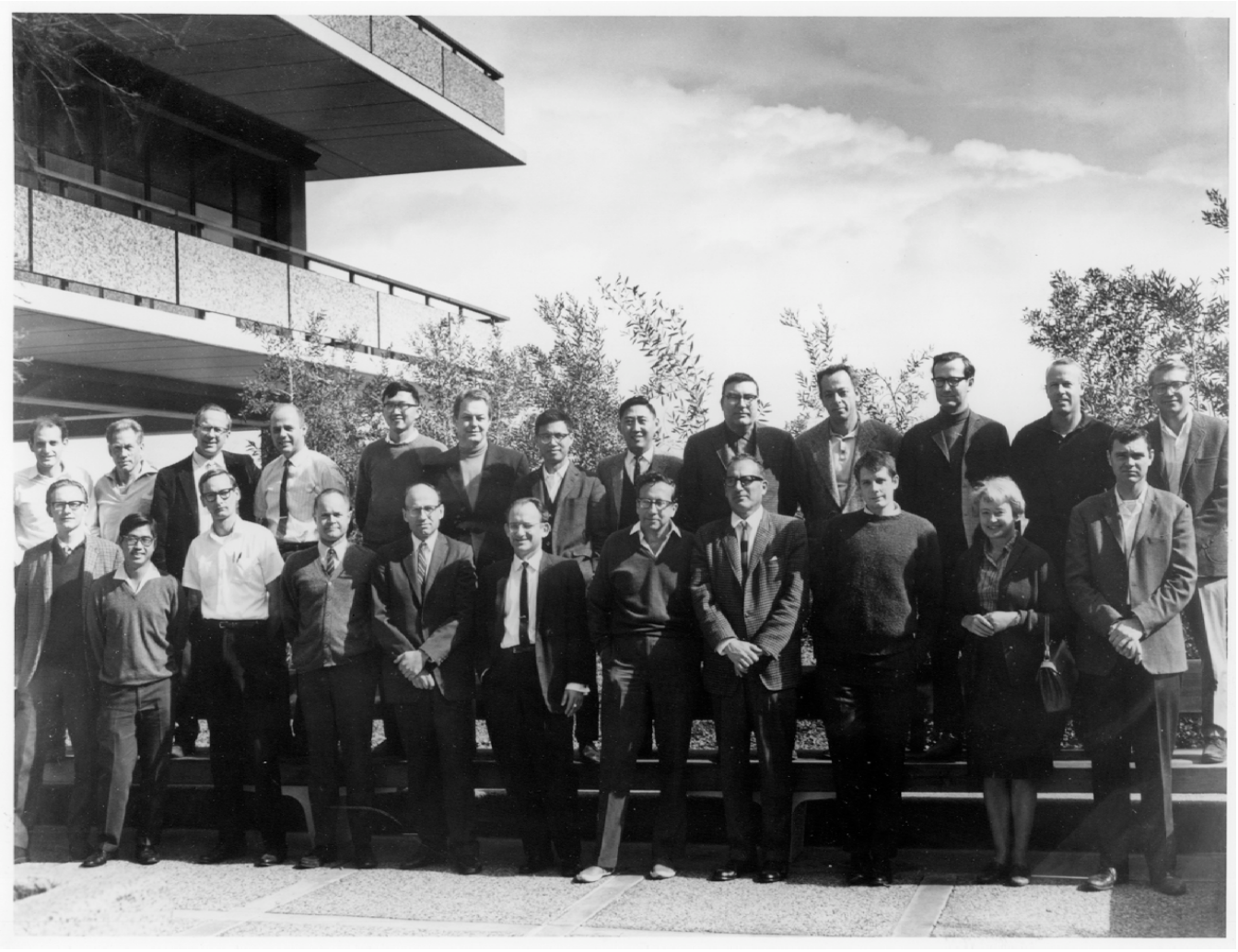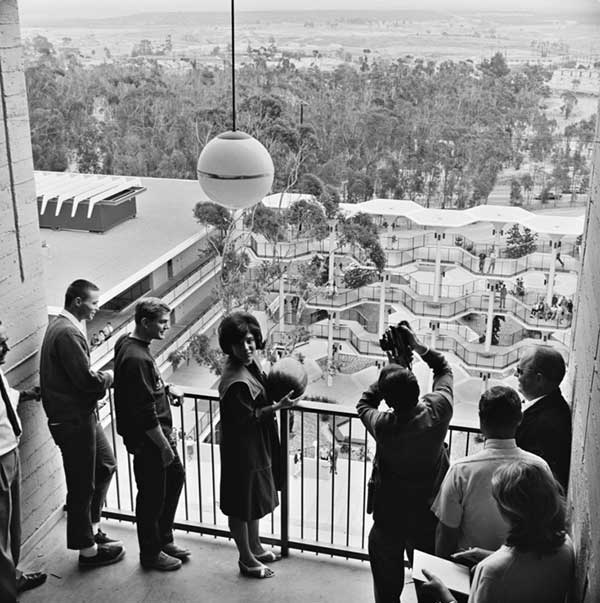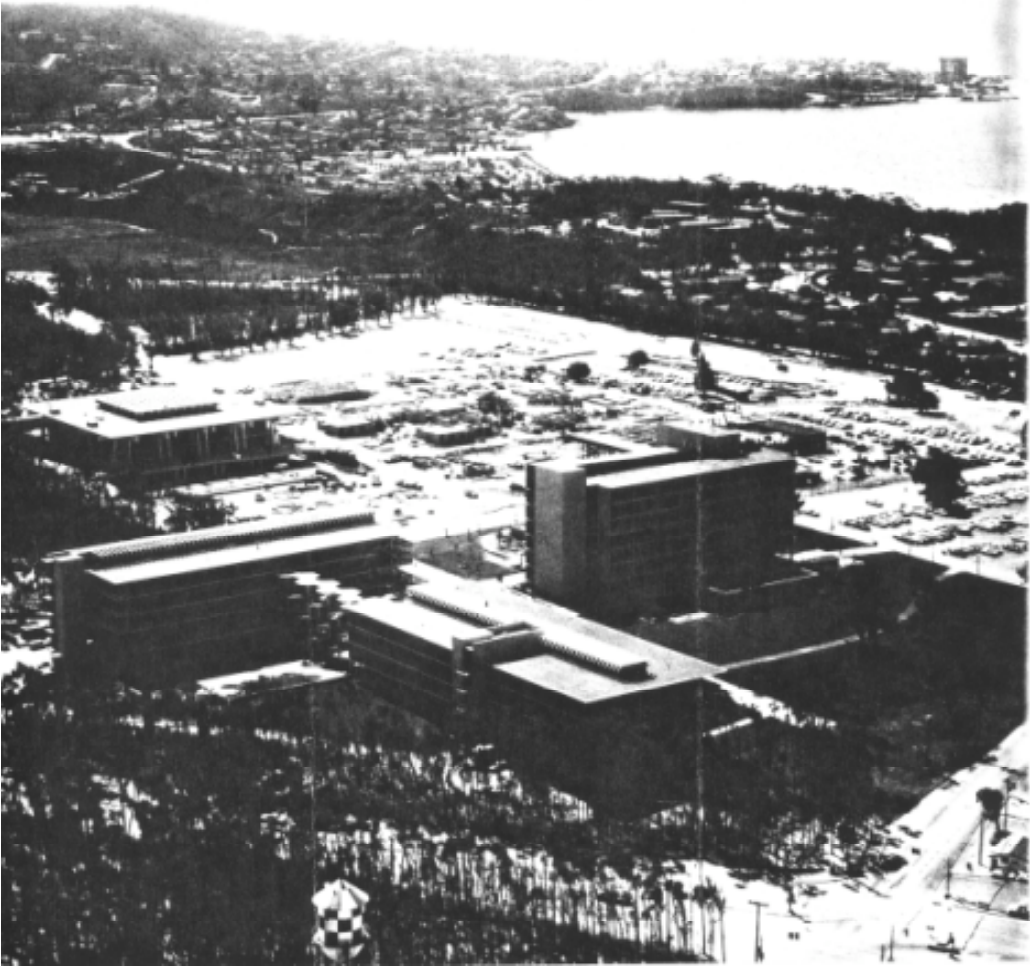The inception of UC San Diego and the early history of the Department of Physics are intertwined in a serendipitous encounter between two influential figures: Keith Brueckner, the inaugural Chair of the Department of Physics, and Roger Revelle, the visionary behind UC San Diego and the namesake of Revelle College.
In 1958, during a visit to La Jolla while contributing to General Atomics' Project Orion—an initiative centered on nuclear-propelled spacecraft—Brueckner's path intersected with Revelle's. Revelle, armed with charm, persuasion, and an ambitious vision for an innovative campus catering to select graduate students in physics, chemistry, and earth sciences, shared his plans with Brueckner. This discourse marked the beginning of Brueckner's journey as the founding Chair of Physics at what was then imagined to be UCLJ (University of California at La Jolla).
Revelle's visionary pursuit was rooted in the broader framework of Clark Kerr's mid-1950s foresight as President of the University of California. Anticipating significant escalations in population and student numbers in California, Kerr proposed several new campuses to accommodate the surge. While Kerr's projections overshot reality, they influenced Revelle and his contemporaries. The chosen locale for a new campus, San Diego, was strategic due to its geographical positioning in the southern tip of California and the presence of the Scripps Institution of Oceanography (SIO) which provided both a faculty nucleus and an administrative foundation. These ambitious plans were buoyed by California's substantial financial investment in the UC, with Revelle securing a unique agreement from Kerr for a large number of high-level initial faculty appointments, setting UC San Diego apart from other new campuses. This blend of significant financial investment, an ideal location, and the ability to recruit top founding faculty allowed for the remarkable genesis of UC San Diego.
Once convinced of the viability of Revelle's plan, Brueckner embarked on a quest to, as he put it, "go after the best people in the country with no inhibitions". He envisioned the nascent department being built around the core experimental fields of solid state/low temperature physics and plasma physics. To supplement these areas, he felt he could build a strong elementary particle theory group, along with astrophysics and space physics groups, since they didn't rely heavily on yet-to-be-developed facilities. Additionally, Brueckner sought to foster a user's group for elementary particle experimental work across peer institutions and national labs. In the year that ensued, he attempted to make the critical first appointments in those fields.
Brueckner's strategy hinged on simultaneous negotiations with multiple prominent figures, a move that escalated their respective interests due to the perception of being part of an exclusive, high-powered faculty at UC San Diego. Beyond enticing prospects with promises of new buildings and a spectacular location, Brueckner used the allure of equipping these structures with cutting-edge laboratories, a perk bolstered by the UC Regents' provision of substantial funds for experimental equipment. Notably, his efforts resulted in a compelling group of early faculty, including Bernd Matthias, George Feher, Harry Suhl, Nobel Laureate Walter Kohn, Marshall Rosenbluth, John Wheatley, Nobel Laureate Maria Goeppert Mayer, Margaret Burbidge, Carl McIlwain, Laurence Peterson, David Wong, William Frazer, and Norman Kroll. Their collective expertise laid the foundation for UC San Diego's pioneering endeavors during its formation.
In the ensuing years, the Department of Physics has nurtured successive cohorts of distinguished scientists and recruited exceptional faculty. Among them are two UC San Diego Chancellors: the inaugural chancellor, Herbert York, and the sixth chancellor and subsequent UC President, Robert Dynes. Mayer Hall, the nucleus of the department, stands as the site of numerous remarkable scientific breakthroughs, most notably the inception of Density Functional Theory pioneered by Walter Kohn and Lu Sham. In 2022 the building was recognized by the American Physical Society as an historic site. As the UC San Diego Department of Physics continues to evolve, its storied past paves the way for an even more promising future of discovery and innovation.

Back (from left): Sheldon Schultz, Oreste Piccioni, Ralph Lovberg, Robert Swanson, Shang Kang Ma, John Malmberg, David Wong, Joseph Chen, Herpert York, Frank Halpern, William Frazer, Robert Gould, Thomas O'Neil
Front (from left): Werner Melhop, Xuong Nguyen-Huu, Wayne Vernon, John Wheatley, Walter Kohn, Harry Suhl, Bernd Matthias, William Nierenberg, Barry Block, Margaret Burbidge, Larry Peterson


Mayer Hall and Urey Hall house the UC San Diego Physics Department to this day.
The proceedings of the 1985 La Jolla Physics Symposium (September 6–8, 1985) provides a wonderful look into the early years of the department.